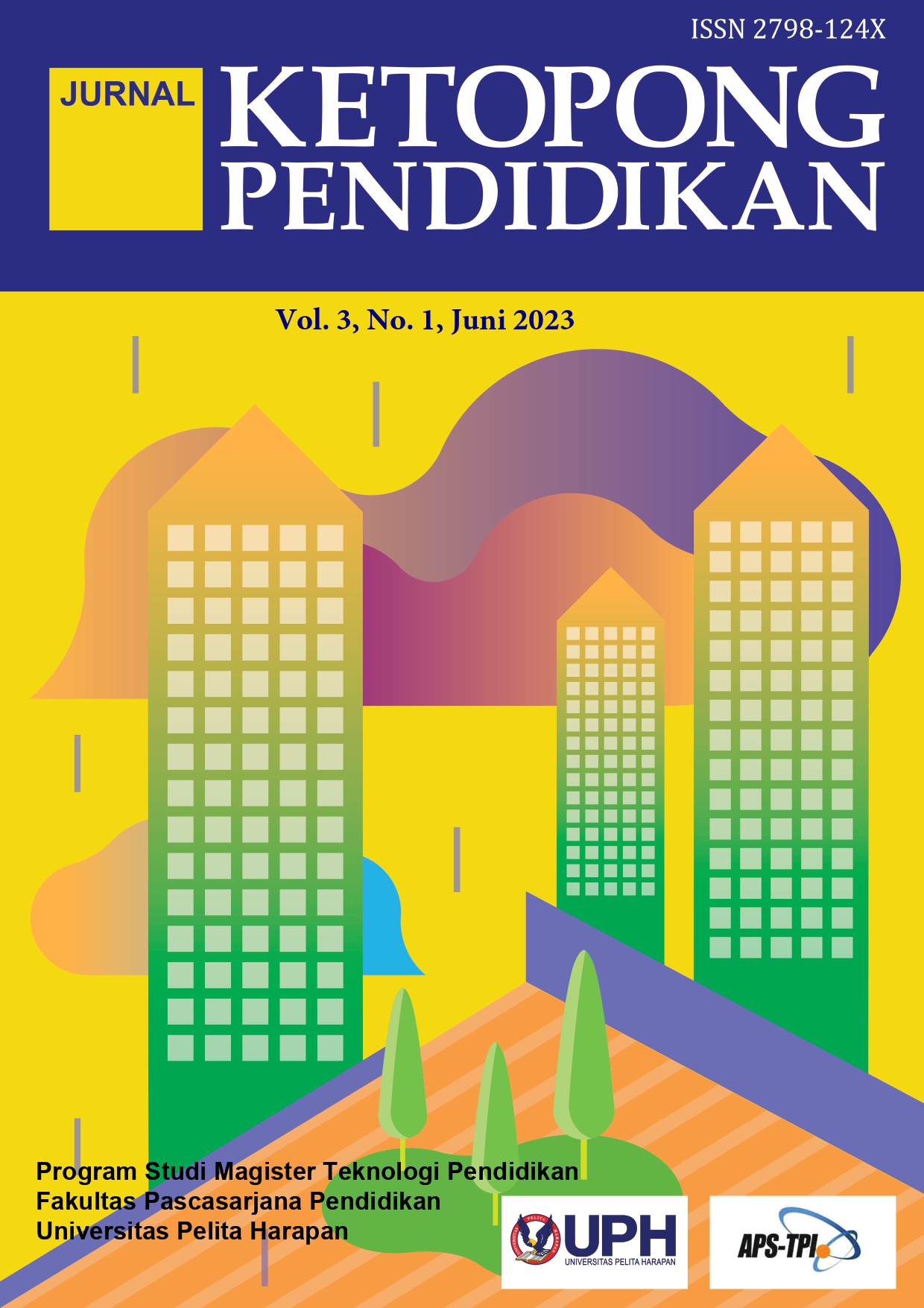The Effect of Principal’s Leadership, Teacher’s Work Motivation, and Teacher’s Work Dicipline on Teacher’s Performance in SMP XYZ Tangerang
DOI:
https://doi.org/10.19166/jkp.v3i1.10409Λέξεις-κλειδιά:
principal leadership, teachers work motivation, teachers work discipline, teacher performanceΠερίληψη
SMP XYZ is a private Christian junior high school located in Tangerang. The leadership of the school principal is one of the main factors influencing teacher performance, along with teachers’ work motivation and work discipline. The improvement of teacher performance greatly depends on how the principal leads, supports, and encourages teachers in carrying out their daily responsibilities. Teacher performance plays a crucial role in determining the overall success and quality of the school. Therefore, the purpose of this study is to examine the effect of the principal’s leadership on teacher performance, the effect of teachers’ work motivation on teacher performance, and the effect of teachers’ work discipline on teacher performance at SMP XYZ, Tangerang. This research employs a quantitative approach by distributing questionnaires to twenty two respondents at SMP XYZ. The collected data were analyzed using multiple regression analysis through the SmartPLS application. Based on the results of the data analysis, the study shows three key findings: first, the principal’s leadership has a positive effect on teacher performance; second, teachers’ work motivation positively influences teacher performance; and third, teachers’ work discipline also has a positive and significant impact on teacher performance.
Αναφορές
Barnawi, M.A., & Arifin, M. (2014). Kinerja Guru Profesional. Yogyakarta: AR-RUZZ Media,.
Arikunto. S. (2010). Prosedur penelitian: Jakarta. Pt. Rineka Cipta.
Blanchard, K. H. (2007). Leading at A Higher Level. New Jersey: Pearson.
Cleophas O. D. W. O., Nyang’au, A., Mabeya, D., & Nyamasege, D. (2014). Effects of Motivation on teacher’s performance in Kenyan Schools: A Survey of Nyamira District Secondary Schools in Nyamira County. 5(30). 67−74. https://core.ac.uk/download/pdf/234636429.pdf
Colquitt J. A., Jeffrey A. L., & Michael J., W. (2015). Organizational behaviour: Improving performance and commitment in the workplace. New York: McGraw-Hill.
Daft, R. L., & Hai, D.M. (2007). Management: The New workplace. Ohio: Thomson South-Western.
Enni, E., Djasmi, S., & Sowiyah, S. (2013). Pengaruh disiplin kerja dan kepemimpinan kepala sekolah terhadap kinerja guru. Jurnal Manajemen Mutu Pendidikan, 1(1). http://dx.doi.org/10.23960/E3J
Ghozali, I. & Hengky L. (2015). Partial least square: Konsep, teknik dan aplikasi menggunakan smartpls 3.0 untuk penelitian empiris. Semarang: Universitas Diponegoro.
Hitt, M. A., Stewart B. & Lymann W. P. (2009). Management. New Jersey: Pearson Education . Inc.
Hoy, W. K., & Cecil G. M. (2013). Educational administration 9th edition. New York: McGraw Hill.
Robbins, S.P., & Timothy, A. J. (2013). Organizational behaviour 15th ed. New Jersey: Pearson Education, Inc.: Prentice Hall.
Nurlaila. (2010). Manajemen Sumber Daya Manusia I. LepKhair.
OECD. (2005). Teachers matter: Attracting, developing and retaining effective teachers. Report, London: Organization for Economic Cooperation and Development.
Pardey, D. (2007). Introducing Leadership. United Kingdom: Elsevier Ltd.
Prihartanta, W. (2015). Teori-teori motivasi. Jurnal Adabiya, 1(83), 1−14. https://www.academia.edu/download/40847896/teorimotivasi.pdf
Septiana, R., & Ivada, E. (2013). Pengaruh kepemimpinan kepala sekolah dan motivasi kerja terhadap kinerja guru SMP Negeri Wonosari. Jupe-Jurnal Pendidikan Ekonomi, 2(1). 107−118. https://core.ac.uk/download/pdf/290552922.pdf
Siregar, S. (2013). Metode penelitian kuantitatif. Jakarta: Kencana Prenada Media Group.
Sugiyono. (2012). Metode Penelitian Bisnis. Bandung: Alfabeta.
Supardi. (2014). Kinerja Guru. Jakarta: Rajawali Pers.
Tung, K.Y. (2015).Pembelajaran dan Perkembangan Belajar. Jakarta: Indeks.
Williams, C. (2005). Management. Ohio: South-Western: Thomson Corporation.
Λήψεις
Δημοσιευμένα
Τεύχος
Ενότητα
Άδεια
Πνευματική ιδιοκτησία (c) 2025 Susylawati

Αυτή η εργασία είναι αδειοδοτημένη υπό το Creative Commons Attribution-ShareAlike 4.0 International License.
Authors who publish with this journal agree to the following terms:
1) Authors retain copyright and grant the journal right of first publication with the work simultaneously licensed under a Creative Commons Attribution License (CC-BY-SA 4.0) that allows others to share the work with an acknowledgement of the work's authorship and initial publication in this journal.
2) Authors are able to enter into separate, additional contractual arrangements for the non-exclusive distribution of the journal's published version of the work (e.g., post it to an institutional repository or publish it in a book), with an acknowledgement of its initial publication in this journal.
3) Authors are permitted and encouraged to post their work online (e.g., in institutional repositories or on their website). The final published PDF should be used and bibliographic details that credit the publication in this journal should be included.


